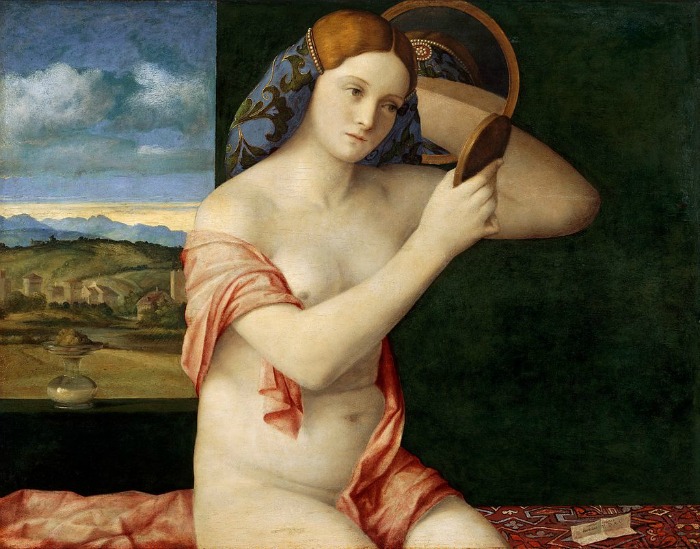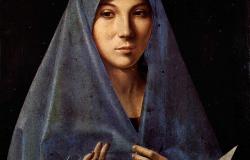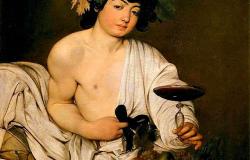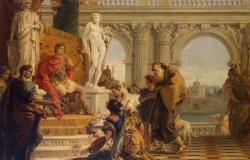Guess the Artwork

Giovane Donna Nuda allo Specchio - Woman with a Mirror (1515), oil on wooden panel by Giovanni Bellini at the>Kunsthistorisches Museum,Vienna.
Giovanni Bellini is often considered to be the father of the Venetian Renaissance. He was reknown for his religiously impassioned images of the Madonna and Christ, and for his ability to convey the subtlest of human emotions in his work.
He was born and died in Venice during a time when the Venetian Republic, La Serenissima, was a crossroads of Europe as well as an amazing trading power, both an integral player in Mediterranean and world trade. Although he may never have ventured far from Venice, Bellini was by no means isolated from other artists. Rather, he studied the style of Northern European painters, especially through the influence of Antonello da Messina, and welcomed visitors from all across Europe.
The Woman with a Mirror painting is part of the last stage of production of Bellini, it is his first female nude which he painted when he was 85 years old and had already embraced Giorgione's tonalismo. (Also known as tonal painting, this was a technique developed by Giorgione which caractherises sixteenth century Venetian painting, and uses the gradual variation of tone-sur-tone colours to harmonize or unify colour in terms of the overall light or atmosphere of the work.)
In the historical perspective, Bellini was essential to the development of the Italian Renaissance for his incorporation of aesthetics from Northern Europe. Significantly influenced by Antonello da Messina, who had spent time in Flanders, Bellini made prevalent both the use of oil painting, different from the tempera painting being used at the time by most Italian Renaissance painters, and the use of disguised symbolism integral to the Northern Renaissance.
This particular painting has puzzled art historians considering that it is one in a few non-religious subjects in Bellini's career, mostly famous for his devotional works. The patron and the history behind the painting are unknown, therefore, experts can only rely on evidence provided by the painting itself to understand more about it. According to Sarah Blake McHam, the indeterminate title 'Woman with a Mirror' reflects the difficulty of deciding whether this beautiful female nude represents a real woman, the mythological goddess Venus, a Christian allegory of vanity or luxury, or all three at once.
In an article published on Artibus et Historiae [Vol. 29, No. 58 (2008), pp. 157-171], she argues that Bellini clearly showed his intent through his prominent signature, "Joannes Bellinus faciebat". The choice of using celebrated signature formula of ancient Greek artists highlighted by Pliny's Natural History indicated "Bellini's aim to paint a nude Venus that surpassed any created by his predecessors, ancient or modern. Whereas the few earlier artists who adopted the signature had used it on religious works or portraits, Bellini matched it to the cognate subject matter of the idealized female nude, which was a traditional hallmark of Greek art."



